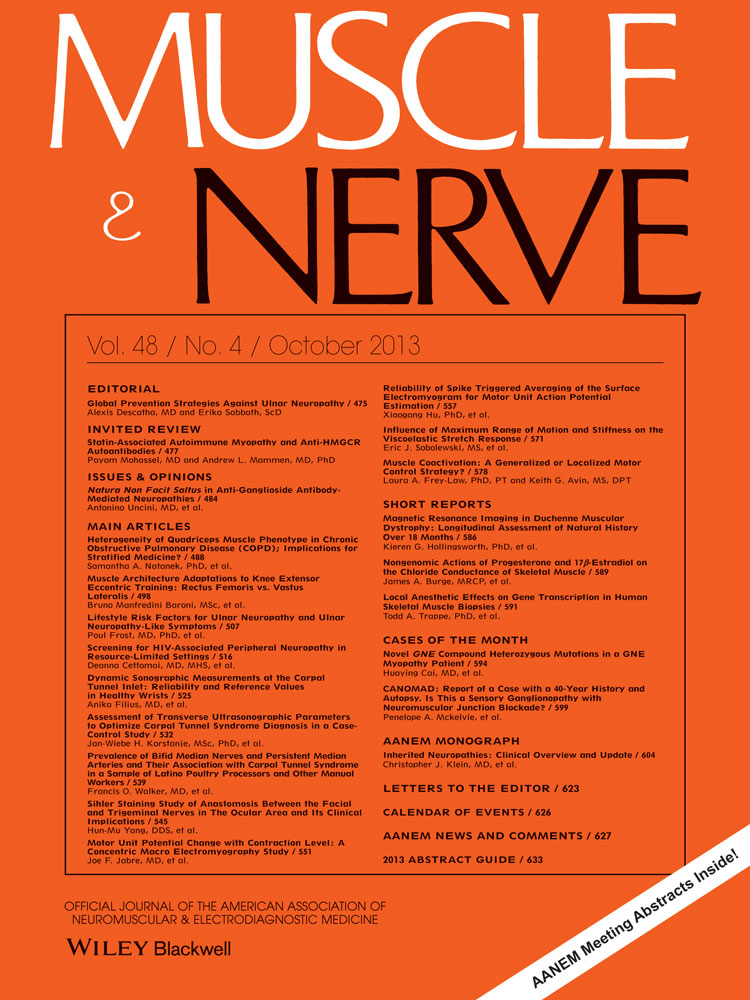Canomad: report of a case with a 40-year history and autopsy. Is this a sensory ganglionopathy with neuromuscular junction blockade?
ABSTRACT
Introduction: An 80-year-old man had a 40-year history of chronic sensory ataxic neuropathy and 11 years of relapsing/remitting episodes of rapid deterioration with perioral paresthesiae and weakness of bulbar, respiratory, and limb muscles. Methods: An immunoglobulin M (IgM) paraprotein was detected 12 years before death, and Waldenstrom macroglobulinemia was diagnosed on bone marrow biopsy 3 years before death. Chronic ataxic neuropathy with ophthalmoplegia, IgM paraprotein, cold agglutinins, and anti-disialyl antibodies (CANOMAD) was diagnosed. Results: Comprehensive autopsy showed severe dorsal column atrophy and dorsal root ganglionopathy. A different pathology was identified in cranial and peripheral nerves, dorsal roots, and cauda equina, comprising infiltration of clonal B-lymphocytes within the endoneurium, perineurium, and leptomeninges. Conclusions: The autopsy provides evidence of the pathogenesis of the relapsing remitting component of CANOMAD, and we postulate that this may relate to the presence of clonal IgM anti-disiayl gangliosides secreting B-lymphocytes within nerves. Muscle Nerve 48: 599–603, 2013




